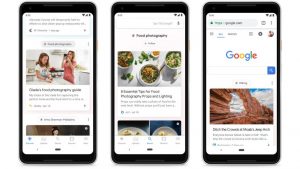More types of content appear in Google Discover, including videos and other “fresh visual content.” Notably older articles and videos will also appear, with Google noting that this “evergreen” content will be “new to you,” but not necessarily to the web. For example, if you are planning your next trip, Google Discover might show an article with the best places to eat or sights to see. Google Discover is also a way to pick up a new hobby, or explore an existing interest. Google will be able to infer your level of expertise on a topic and tailor content accordingly. To aid in this, cards will also appear in Search results With the help of the Topic Layer in the Knowledge Graph, Discover can predict your level of expertise on a topic and help you further develop those interests. If you’re learning to play piano, for example, you might see beginner content about learning keys. If you’re already a skilled pianist, you may see a video on more advanced techniques. Related Article: Here’s how to access Google search hidden search tools. Similar to Google Assistant, Google Discover supports multilingual content, with articles from English and Spanish sources appearing simultaneously. This feature will be available in more countries and languages in the long run. One of the most significant changes today is that Google Discover now appears on the mobile Google home page. Scrolling down below the search box on the page will present a feed of articles exactly like on Android.
Think of it as your new mobile homepage where you can not only search, but also discover useful, relevant information and inspiration from across the web for the topics you care about most. This will be rolling out over the next few weeks. Google announced these changes and more at an event in San Francisco today to celebrate the 20th anniversary of the company’s founding. Google Discover was made available first at Google.com for mobile devices.

